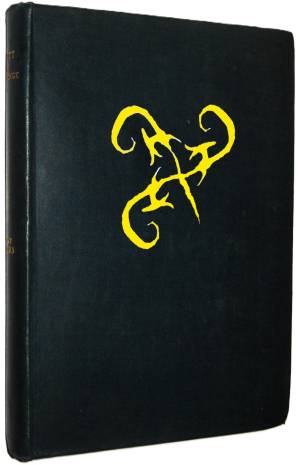Le Roi en Jeune
 The book, published in 1885 (8 years before Chambers' "The King in Yellow") is a thin black octavo volume with the Yellow Sign embossed upon its cover. The play is in French, and no author's name is listed. However, some sources name the playwright as one 'Castaigne' and say that he killed himself after completing it.
The book, published in 1885 (8 years before Chambers' "The King in Yellow") is a thin black octavo volume with the Yellow Sign embossed upon its cover. The play is in French, and no author's name is listed. However, some sources name the playwright as one 'Castaigne' and say that he killed himself after completing it.
- Though not the notorious work of Chambers' stories, this play was indeed suppressed and burned by the French authorities (for reasons that are unclear), and many rumours of madness and death surrounding it.
- Those who see the Yellow Sign on the cover sometimes appear to be psychologically affected by it, but this is by no means a universal reaction.
- While the play predates Chambers' work it does seems to have been an inspiration for him in his book of short stories.
- Some of the names used in the play, such as Carcosa and Haita also appear in the works of Ambrose Bierce, indicating that the either Bierce's stories were used in creating the names, or that both the play and Bierce borrowed from and even earlier work. Indeed. there is some evidence of older works with the same name - a fragment by Marlowe and a lost Restoration drama, although neither is readily available to the public.
Events Surrounding the Book
- Talbot Estus loaned a copy of this play to Nathaniel Browne. He claims to have adapted and translated it into his play "Carcosa, or The Queen and the Stranger". The Bibliotheque Nationale in Paris also has a single reference copy of the play.
- Browne completed his study of the play in mid-November 1928, using the copy he borrowed from Estus. Although this had been heavily annotated in English by the playwright, he nevertheless was not sure he fully understood it in the end.
- Of some interest, this book differs from Estus' own play in several significant ways (for example Aldones, the king of Alar is a character in the book, but not in the stage performance), but is nevertheless still clearly the source of the Texan's inspiration in creating his production with the The Group.